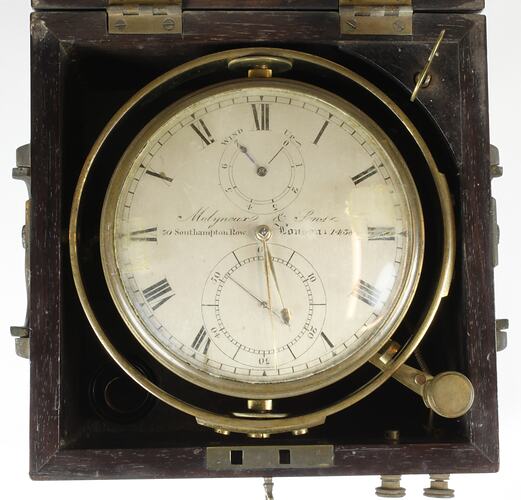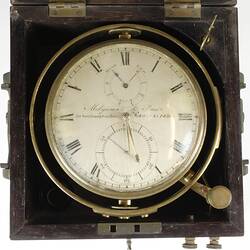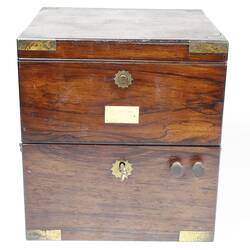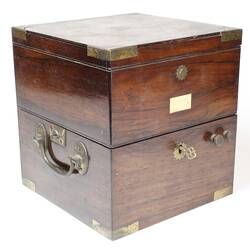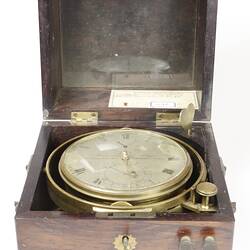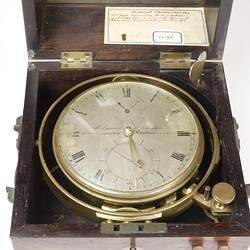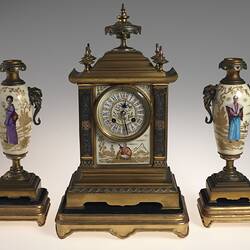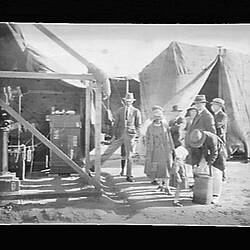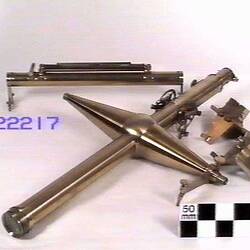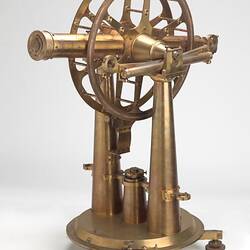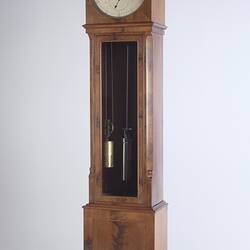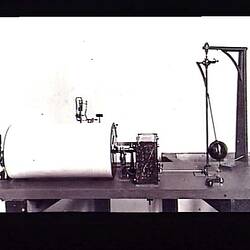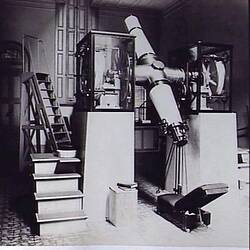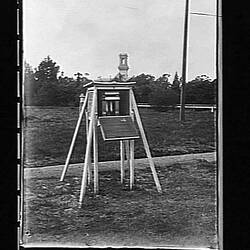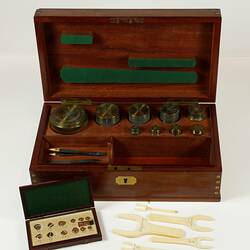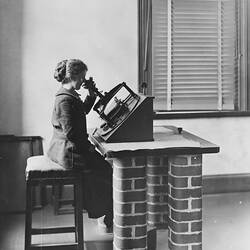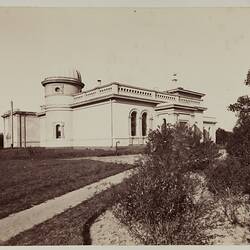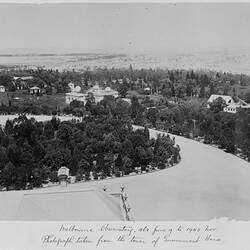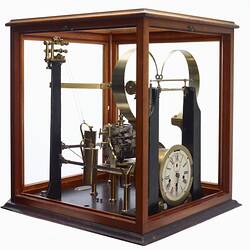Summary
Marine chronometer by Molyneux & Sons, London, no. 1438, circa 1830s.
This is one of the first two chronometers used by Government Astronomer Robert Ellery at the Williamstown Observatory in the 1850s.
This chronometer was also used in several astronomical expeditions undertaken by the Melbourne Observatory, including the total solar eclipse expedition to north Queensland in 1871 and the Transits of Venus in 1874 and 1882. In 1887 Ellery could report that the chronometer was still going at an excellent rate. See Robert Ellery to Editor of The Observatory, 19 Oct 1887 [Public Record Office of Victoria, series VPRS 866, Outward Letter Books - Foreign, Vol 1)
In about 1860 Ellery had the chronometer adapted by a Williamstown watchmaker so that an electrical circuit was attached to the seconds arbor of the chronometer, producing an electrical signal every second that could be used to mark a chronograph. Thus adapted, the chronometer could be used in field observatories to enable chronographic registration of astronomical observations. Ellery used the chronometer for field observations during the Geodetic Survey in the 1860s. See Robert Ellery, 'On the Application of Galvanic Electricity to Practical Astronomy,' Transactions of the Royal Society of Victoria, v 5, 1860.
Physical Description
Brass chronometer on brass gimbals in wooden case. Silvered dial with roman numerals and seconds dial at 6 o'clock and winding dial at 12 o'clock. Label inside case indicating chronometer used as a sidereal chronometer at Melbourne Observatory, and notes of repair dates from 1882 to 1892.
More Information
-
Collection Names
-
Collecting Areas
-
Acquisition Information
Transfer from Office of Trade Measurement (formerly Weights & Measures Branch), Victoria: Local Government Department, 28 Sep 1994
-
Maker
Molyneux & Sons, 30 Southampton Row, London, Middlesex, England, Great Britain, circa 1830
-
User
Williamstown Observatory, Williamstown, Greater Melbourne, Victoria, Australia, 1860
-
User
Victoria: Geodetic Survey of Victoria, Victoria, Australia, 1860
-
User
Melbourne Observatory, South Yarra, Greater Melbourne, Victoria, Australia
-
Inscriptions
Dial marked "MOLYNEUX & SONS, 30 SOUTHAMPTON ROW, LONDON: 1438".
-
Classification
-
Category
-
Discipline
-
Type of item
-
Overall Dimensions
18 cm (Length), 18 cm (Width), 20 cm (Height)
-
Keywords
Astronomical Instruments, Astronomy, Marine Chronometers, Solar Eclipses, Transits of Venus, Horology
